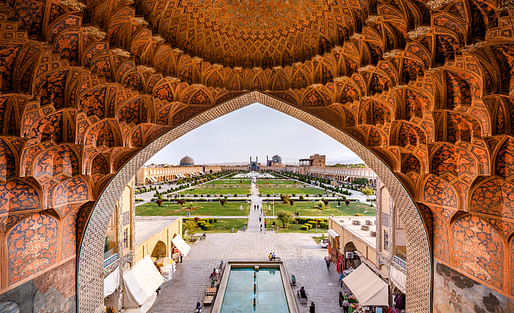

Tensions in the Middle East keep escalating after the U.S. President followed his drone assassination of Iranian military commander Qassem Soleimani with a tweet that publicly threatens to strike dozens of target sites in Iran, including "important" cultural sites, if the country dared to retaliate.
"Let this serve as a WARNING that if Iran strikes any Americans, or American assets, we have targeted 52 Iranian sites (representing the 52 American hostages taken by Iran many years ago), some at a very high level & important to Iran & the Iranian culture, and those targets, and Iran itself, WILL BE HIT VERY FAST AND VERY HARD," threatens one passage of Trump's vague January 4th Twitter post which, as lawyer and specialist in historic preservation, Sara C. Bronin, pointed out in the Los Angeles Times, "amounts to an announcement of an intention to commit war crimes."
According to the Geneva Convention Protocol I as well as other international treaties, established laws of war, and even U.S. Federal Law, any acts of hostility against cultural objects are prohibited, and if violated, could constitute a war crime.
"President Trump should publicly reverse his threats against Iran’s cultural property and make clear that he will not authorize nor order war crimes," said Andrea Prasow, acting Washington director at Human Rights Watch. "The US Defense Department should publicly reaffirm its commitment to abide by the laws of war and comply only with lawful military orders."
While no specific sites were mentioned, the territory of modern-day Iran is home to a plethora of historically and culturally significant sites, some of them dating back thousands of years.
The UNESCO World Heritage List includes 24 sites (22 of them cultural and 2 natural sites with 56 more sites on the tentative list) in Iran, including the monumental ruin complex of Persepolis, the historic city of Yazd, the Arg-e-Bam citadel of Bam, the Sheikh Safi al-din Khānegāh and Shrine Ensemble in Ardabil, and several Armenian Monastic Ensembles among many others.
The Director-General of UNESCO, Audrey Azoulay, meet with the Ambassador of the Islamic Republic of Iran, Ahmad Jalali, today to discuss the current threat to the country's heritage and culture.
"The Director-General recalled the provisions of the 1954 Convention for the Protection of Cultural Property in the Event of Armed Conflict and the 1972 Convention Concerning the Protection of the World Cultural and Natural Heritage, two legal instruments that have been ratified by both the United States and Iran," explains a UNESCO statement regarding the meeting today. "The 1972 Convention stipulates, inter alia, that each State Party 'undertakes not to take any deliberate measures which might damage directly or indirectly the cultural and natural heritage […] situated on the territory of other States Parties to this Convention.'"
Cultural sites of priceless historical value have repeatedly come under attack in the region in recent years. The deliberate damage, or even destruction, of various temples and ancient structures in Palmyra, the Assyrian Nimrud ziggurat, the library and the Great Mosque of al-Nuri in Mosul, Aleppo's Umayyad Mosque, and other sites in Syria, Iraq, and Libya at the hands of ISIS militants and rivaling fighting parties had caused international outrage.
Trump's heavy-handed threat of barbarian tactics only puts him on the same level as the forces the region so desperately tried to free itself from.
9 Comments
IMPEACH THIS MAN!
HE WAS!
CONVICT THIS MAN!
RED ROVER, RED ROVER, SEND THE ARTICLES OVER
NANCY!
good job archinect.
I have some reading as well
The Blind Owl
It's pre-devolution and you can't bomb it.
perhaps the Blind Owl already flew over?
agent Orange, the terrorist.
well that's a classiclink here
Block this user
Are you sure you want to block this user and hide all related comments throughout the site?
Archinect
This is your first comment on Archinect. Your comment will be visible once approved.